Thermaltake Tenor
And finally, the Tenor from Thermaltake. With a slightly different approach to the layout of components, which we’ll get to later, the Tenor manages to hold more externally available drives than any other HTPC in this roundup without being substantially taller.
Taking a different spin on aesthetics, the Tenor has a very curvaceous front and a two-tone paint job. The top is finished in a glossy metallic silver while the front is brushed, anodized aluminum.
Our model came in silver, but a black version is available also.
To keep the front as simple as possible, the port cluster has been moved to the side and features the usual combination in the cramped configuration that will frustrate users with larger USB devices or audio cables.
Also on the left side, but along the front edge, is the power and reset buttons, along with the HDD and power LEDs. We particularly like how Thermaltake has done the indented line through the buttons and embossed logo in the upper left-hand corner. The finish of the Tenor is definitely as good as or better than all the other case’s in the roundup, as is also evident in this shot of the Thermaltake logo on the lower right side.
Another different idea implemented in the Tenor is a method for stealthily concealing all the drives, which has been pulled off rather effectively via a simple push-latch hinge, and resistance gearing to slow the fall of the cover.
Separating the case into segments are three mirror-finished pieces, which really add to the elegance of the design in our opinion. In this close-up, you can also see the gears that slow the fall of the main door, along with the push-latch that makes the next feature (that we’ll be looking at) work.
Instead of always having to open the entire door to simply get at an optical drive, the Tenor also gives one the option to get at just the bottom 5¼” drive via a second push-button door.
And finally, the Tenor from Thermaltake. With a slightly different approach to the layout of components, which we’ll get to later, the Tenor manages to hold more externally available drives than any other HTPC in this roundup without being substantially taller.
Taking a different spin on aesthetics, the Tenor has a very curvaceous front and a two-tone paint job. The top is finished in a glossy metallic silver while the front is brushed, anodized aluminum.
Our model came in silver, but a black version is available also.
To keep the front as simple as possible, the port cluster has been moved to the side and features the usual combination in the cramped configuration that will frustrate users with larger USB devices or audio cables.
Also on the left side, but along the front edge, is the power and reset buttons, along with the HDD and power LEDs. We particularly like how Thermaltake has done the indented line through the buttons and embossed logo in the upper left-hand corner. The finish of the Tenor is definitely as good as or better than all the other case’s in the roundup, as is also evident in this shot of the Thermaltake logo on the lower right side.
Another different idea implemented in the Tenor is a method for stealthily concealing all the drives, which has been pulled off rather effectively via a simple push-latch hinge, and resistance gearing to slow the fall of the cover.
Separating the case into segments are three mirror-finished pieces, which really add to the elegance of the design in our opinion. In this close-up, you can also see the gears that slow the fall of the main door, along with the push-latch that makes the next feature (that we’ll be looking at) work.
Instead of always having to open the entire door to simply get at an optical drive, the Tenor also gives one the option to get at just the bottom 5¼” drive via a second push-button door.


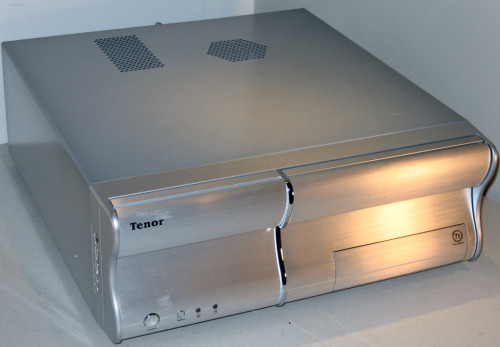

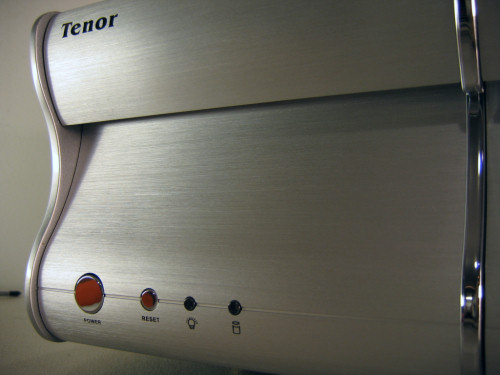
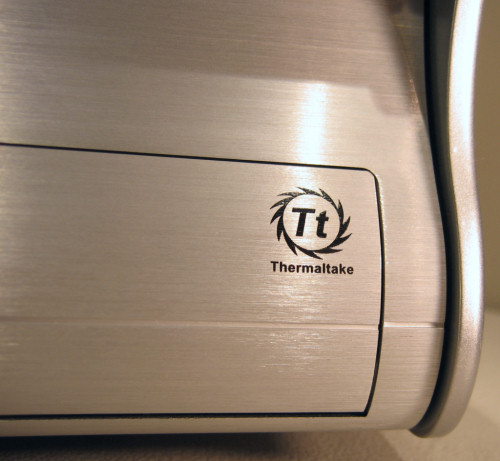
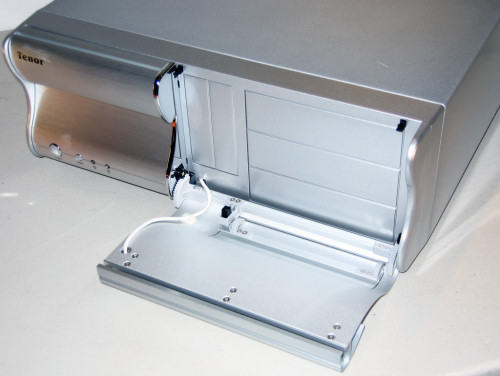
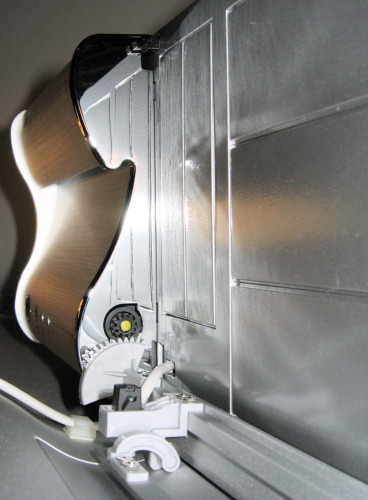









26 Comments
View All Comments
BigandSlimey - Tuesday, November 22, 2005 - link
These guys http://www.atechfabrication.com/products/HTPC_case...">http://www.atechfabrication.com/products/HTPC_case... have been designing their cases in conjunction with the HTPC guru's at avsforum. I'd suggest anyone planning to build a HTPC to go to http://www.avsforum.com/avs-vb/forumdisplay.php?f=...">http://www.avsforum.com/avs-vb/forumdisplay.php?f=... and do some reading, there's a lot to consider.I'm also surprised at your omission of the Ahanix cases http://www.ahanix.com/ahanix_product_list.asp?cid=...">http://www.ahanix.com/ahanix_product_list.asp?cid=... which IMO look a lot better than any of the options on your article.
See also: http://www.origenae.com/products_htpc.htm">http://www.origenae.com/products_htpc.htm
http://www.silverstonetek.com/product-case.htm">http://www.silverstonetek.com/product-case.htm
ceefka - Tuesday, November 22, 2005 - link
Those Origenae look very nice. I meant the X15 in my earlier comment. This one will cost around 500 bucks. Expensive, but very pretty.lukecon - Tuesday, November 22, 2005 - link
All well and good on the review love AnandTech's review but I think you guys forgot something - The TV tuner in your system - I mean it is a Home Theater PC.Tamale - Tuesday, November 22, 2005 - link
The tuner shouldn't really pose any additional problems with a particular case, and the 6600GT we use gets as hot or even hotter than most video cards with built-in tuners.Perhaps the cooling in an HTPC would be changed dramatically though if another expansion card is also in the system.. hmm.. I'll have to think about that one. Thanks for the comment.
BigLan - Tuesday, November 22, 2005 - link
Actually, tuners can get pretty toasty, maybe not as hot as a video card, but they don't have active cooling on them. An MCE-500 dual tuner stuck in the last slot with no airflow could be a problem.If you are adding a soundcard as well, it can also impede airflow which exacerbates the problem.
tkr2099 - Tuesday, November 22, 2005 - link
Very nice review! I'm planning on building a HTPC this holiday season, so this review could not have come at a better time. Thank you, Anandtech, for another extremely well written and helpful review!tayhimself - Tuesday, November 22, 2005 - link
IMO Silverstone especially and less so Ahanix are specialized HTPC vendors. Either you didnt know this, didnt bother to do research, or didnt get a free sample from them. None of which is a terribly good thing.AFAIK no 3R systems cases have been available in North America since about 3 years ago when newegg carried a few. Theyre a Korean manufacturer of quality cases that are quite popular in Australia (I'm in Canada FYI).
Also, why the POS power supply along with the lousy thermaltake heatsink with a hot P4 system? Not too many people are building HTPCs with P4s, and they tend to use better components than Mad Dog and ThermalTake (no offense to the *bling* obsessed).
The measurements dont jive with the subjective measurements as a 9 dB difference between the loudest and quietest is almost twice as loud.
A poor review, that doesnt belong on AT. I could probably write a better review and I've never done one before.
MPE - Tuesday, November 22, 2005 - link
I could probably write a better review and I've never done one before.Cop out - not to mention inconsequential, immature, ad hominem, and probably false.
tayhimself - Tuesday, November 22, 2005 - link
ad hominem? Go to http://dictionary.com">dictionary.comceefka - Tuesday, November 22, 2005 - link
Isn't that just perfect? If you can get these temperature numbers with P4, you know that a 90nm s939 is going to do just fine.There are so many cases to chose from. Even with built in LCD screens (not cheap btw). Maybe AT can inlcude HTPC's in their entry/mid-range/high-end reviews and builds. On the other hand, this could be a totally different category by itself. You'd also have the opportunity to chose platform.
This brings forth the next question: How long before Apple makes a Home-Pod, HTPC based on Mac ingrediënts. They should be able to make/develop one by now.